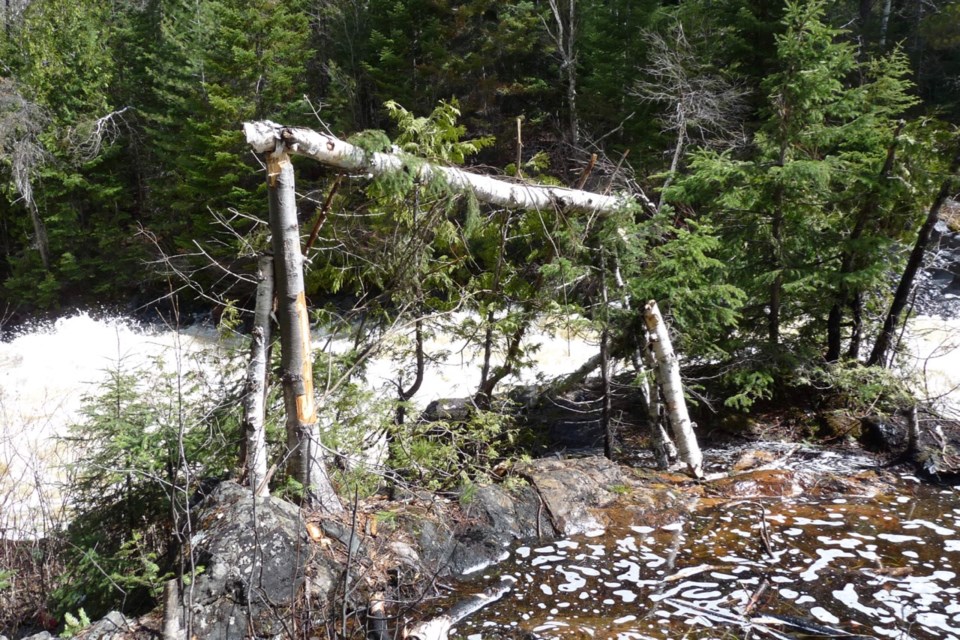Litter and trees being cut down at a popular hiking trail are a growing concern for the group helping preserve the area.
Laurent Robichaud is a member of the Friends of Grassy River group. Over the past four years, he said there has been litter on the High Falls trail as well as damage to the forest adjacent to the falls.
"We’ve never dealt with it directly, it started off with a couple of birch trees and they were healthy birch trees. They cut one and all of a sudden I noticed there was another one cut. This spring when we went out with the Wintergreen group...somebody built a shelter right at the upper High Falls. And when he built a shelter, he cut the one and only pine tree that was standing on the rock,” he said.
That was the tipping point for Robichaud.
"This has to stop and although creating more public awareness to this abuse might not solve the root problem, it could still help communicate to more and help people understand that we need not to consume our environment but preserve and protect and admire only its natural beauty. Sharing this treasure with the public was our deeply rooted purpose," he wrote in an email.
Robichaud said conservation officers have been informed about the issues and have investigated once already. Moving forward, he said there will also be random checks.
To clean up the garbage, he said some of the trail users clean it up every time they go.
There are no garbage cans at the site.
He said that's because the mandate the group got from the Ministry of Natural Resources and Foresty was for a trail only.
High Falls is about 25 kilometres from Timmins on the Grassy River.
The MNRF-permitted trail circuit to the site was opened in 2015.
The trail, said Robichaud, was developed by a small group who wanted to share it with the community and is used year-round.
“In the winter time....you don’t need snowshoes to go there anymore. You might need the snowshoes in the beginning a bit, but towards the middle of winter it’s a hard-packed trail. It’s not snowmobiles either, it’s hard packed from people walking in there,” said Robichaud.



